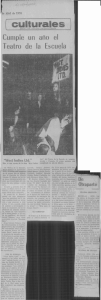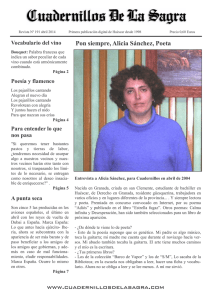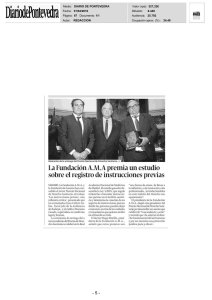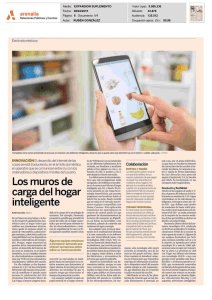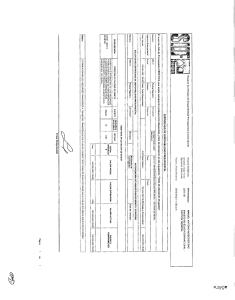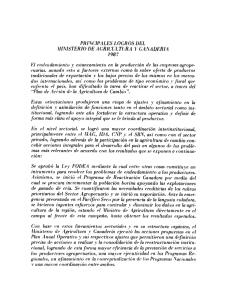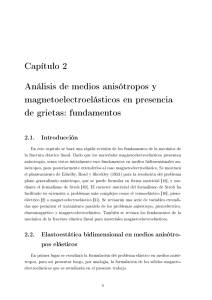AB STRACT . Let G = Ga (P ± io , m, n) be the causal (anticausal
Anuncio
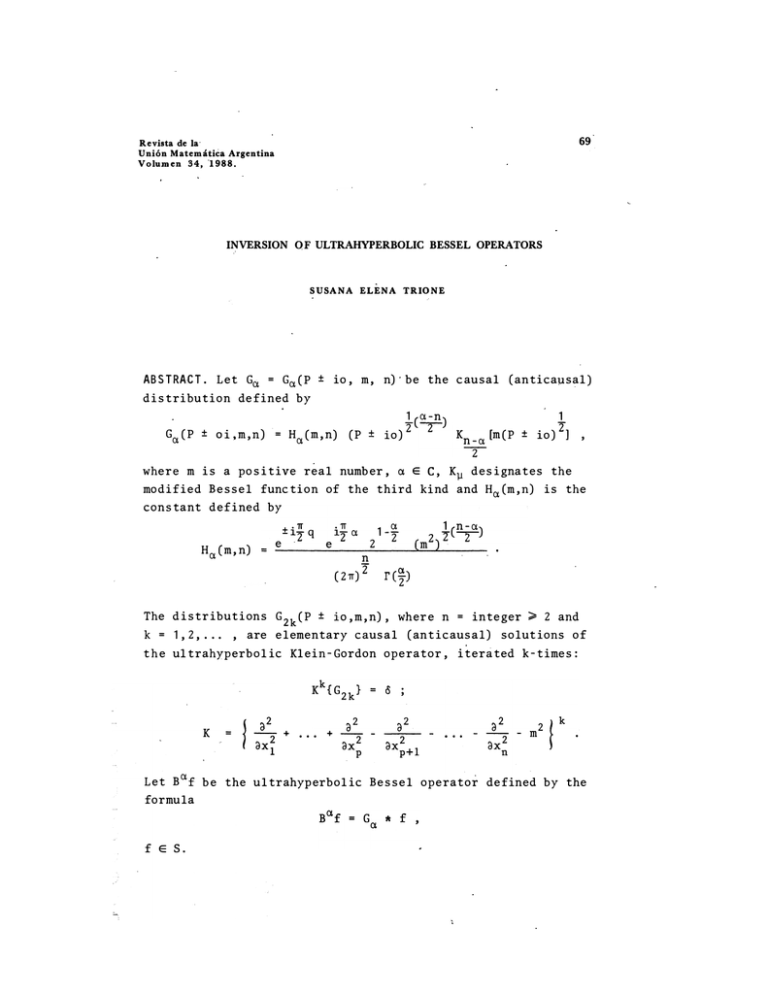
69
R e vista de la
Uni6n M atem ática Argentina
V o lum e n 3 4 , 1 9 8 8 .
INVERSION Q F ULTRAHYPERBOLIC BESSEL OPERATORS
S U SA N A E L E N A T R IO N E
A B S T RAC T . L e t G� = G a ( P ± io , m , n) b e the c au s a l ( an t i causal )
d i s tri bu t i o n de fined by
1
l( a - n)
'2
2
2
.
G a ( P ± o l , m , n ) = H a ( m , n ) ( P ± l' o )
K n _ a [m ( p ± io ) ] ,
-'
2
whe r e m i s a po s i t ive r e a l numb er , a E e , K � d e s i gna t e s the
mo d i f i e d B e s s e l func t i o n of the third kind and H a (m , n) i s the
cons tant d e f i ned by
'Ir
1 n-a
'Ir Q
± l. '2
1 -�
(
1'2 a
)
2
.
2
m
( ) 2" ""2
e
2
e
H a ( m , n)
n
•
( 2 '1r) "2
r ( �)
2
The d i s tr ibu t i on s G 2 k ( P ± i o , m , n) , wher e n = inte ger � 2 and
k = 1 , 2, . .
, are e l ementary c aus a l ( an t i c aus a l ) s o lut ions o f
t h e ul trahyp erb o l ic Kl e i n - Gordon operator , i t era ted k - t ime s :
.
+
•
•
•
+
L e t B a f b e the u l tr ahyp erb o l i c B e s s e l operator de fined by the
fo rmu l a
f e S.
70
Our
To.
prob 1 em eóns l s ts i n the o b t a inmen t · o f an ope rator
=
{B o,) - 1 su e h tha t if
then
In th is. No te we prove ( Theor em I I I . 1 , formu l a ( I 1 I , 7) ) that
fo r a 1 1
a
E C.
We o b s erve tha t the d i s tr ibu t i o n G o. ( P ± i o , m , n) i s a cau s a l
( an t ie aus a 1 ) ana 1 0 gu e o f t h e kerne l due to N . Ar ons z a j n - K . T .
Smi th and A . P . Ca lderón ( e f . [ 1 ] and [ 2 ] , r e sp e e t ive1y) .
The p ar t icu lar rad i a l c a s e o f our prob 1 em was s o l ved by No gin ,
for a t= 1 , 2 ; 3 , . . . ( e f . [3 ] ) .
l.
I N TRO DUCT I O N
L e t x = ( x 1 , x Z " " ' x ) b e a po int o f the n - d imen s iona l Eue 1 i ­
n
dean spae e R n • Cons id er a non - d e gener a t e quadr a t ie form i n n
var iab l e s o f the form
P
=
P ( x)
=
x Zl +
-
p + q . The d i s tr ibut ion ( P
whe r e n
(P
i o ) ;'
±
Xl
The d i s tr ibu t ions ( P
=
-
I
- k
,
( e f . [4 ] , p . 2 7 S ) .
E�O
Z +
wher e E > O , I x l Z
at A
1 im { P
k
=
. . •
±
± 10)
•
A e
Z
p +q .
(I , 1 )
A i s d e f in e d by
iE j x l Z }A
+ xZ . '
n
x
( I , 2)
C.
i O ) A ar e ana 1 y t i e in A everywh e re exe ept
0 , 1 , . . . ; where they have s imp l e po 1 e s
±
71
Q ± i O ) A a r e d e f in e d i n an ana l o gu e
"
manner a s the d i s tr ib u t i o n s ( P ± i o ) A . L e t u s p u t ( c f . [4 ] ,
The d i s tr ibu t i o n s ( m
2
+
. p . 28 9)
(m
2
+ Q
±
=
iO) A
l im ( m
e:-+O
2
+
' 2 A
Q ± i e: l y l )
( I , 3)
whe r e m i s a p o s i t iv e r e a l numb e r , A E e , e: i s a n arb i t r ary
p o s i t iv e numb er . I n the formu l a ( 1 , 3 ) we have wr i t t e n
p
+
Q
Q ( y)
q
n ,
2
+
YI
•••
y
+
2
p
- y
and
•••
+
2
p q
+
( I , 4)
2
yn
I t i s us e fu l t o s t a t e an e qu iva l e n t de f in i t i o n o f the d i s tr i ­
b u t i o n s ( m2
+
Q ' ± i o ) A. .
I n th i s d e f i n i t i o n app e a r the d i s tr ibu t i o n s
(m
(m
2
2
+
+
Q)
�
2
Q) A
if
m
O
if
m
O
if
m
if
m
(m
Q) :
( -m
We can p r o v e , w ':' �:.
+
2
Q) A
_ _. "
,.l �
2
2
2
2
+
Q ;;;. O
+
Q < O
+
Q
+
Q .;;;; O
>
( I , 5)
O
( I , 6)
r f i c u l ty , tha t the fo l l ow i n g f o r mu l a
i s va l i d ( c f . [ 7 ] , p . 5 6 6 )
( 1 , 7)
F r o m t h i s formu l a we c o nc lude ílmmed i a t e l y t h a t
(m
whe n
2
A = k
+
Q
+
.
io)
Let
Ga ( P
f ined b y
±
=
(m
2
+
Q - 10 )
•
A
=
(m
2
+
( 1 , 8)
p o s i t ive i n t e g e r .
We o b s e rve tha t ( m
t ions o f A .
A
2
+ Q
±
i o ) A a r e e n t i r e d i s t r ib u t i o n a l func ­
i o , m , n) b e the caus a l ( an t i c au s a l ) d i s tr ibu t i o n d e ­
72
io ) ]
,
(I ,
9)
wher e m i s a po s it iv e r e a l number , a E e , K� d e s ignat e s the
we l l - known mod i f i ed B � s s e l fun c t ion of the t h ird k ind ( c f . [ 5 ] ,
p . 7 8 , formu l a e ( 6 ) and ( 7 ) ) :
K
v (z)
lv ( z ) =
( 1 , 1 0)
00
L
m= O m !
(7)
r
2m+v
(i , 1 1 )
(m+v + l )
and Ha (m , n ) i s the con s t ant d e f ined by
H (m , n)
a
. 1T
len - a)
+- 1T Q 1.
1 -�
1z
a
z
e
e
2 2 (m 2 ) 2 2
n
Z
1T
2
r (�)
)
(
2
(1, 1 2)
The fol l owing formu l a i s val id ( c f . [ 6 ] , p . 3 5 , formu l a ( I I , 1 . 8 ) ) :
n e
Z
( 2 1T )
. a
11T -
a
--
2 ( m 2 + Q ± io ) 2
(I , 1 3)
Here A d eno t e s the Four ier t r an s fo rm o f a d i s t r ibut ion .
We o b s erv e t hat the r ight - hand memb er o f ( 1 , 1 3 ) is an ent i r e
d i s t r ibut ion ' o f a ; t her e fo r e Ga i s a l so a n ent ir e d i s t r ibut io ­
nal funct ion o f a .
1 1 .
T H E P RO P E RT I E S O F G (P ±
a
io , m , n )
The B e s s e l pot ent ial o f o r der a ( a b e ing any c ompl ex numb er )
o f a t emp erat e d i s t r ibut ion f , deno ted by J a f i s def ined by
a
-Z
2
2
Q
A
J
X
J
)
1T
4
+
(Il , l )
fA
(J f ) = ( 1
73
wa s int r o du e ed by N . Ar o n s z a j n - K . T . Sm i t h and A . P . C a l d e r 6 n ( e í .
[1 ]
and
[ 2 ] , r e s p e e t iv e l y ) .
A . P . C a l d er 6 n pr o v e s in
[ 2 ] , Theo r em 1 , t ha t
(ll , 2)
wh er e
y (a)
G (x )
a
J:
x
e- I l
e- I xl t
�
(t +
)
n-a - l
-----2
dt
(ll , 3)
Re a < n + 1 . , and
[y ( a ) ]
-1
( 2 1T )
n- l
-2- r a
( )
2"
r
.
(
n-a+1
) .
2
(ll,4)
We s t a r t by o b s erv ing t ha t t h e d i s t r ibut i o n a l fun e t ion
G a ( P ± io , m , n )
(ef .
fo rmu l a ( 1 , 9 ) ) is
a11
( c au s a l , ant i e au s a l )
an a l o gu e o í t h e k e r n e l d e f in e d by t h e fo rmu l a ( 1 1 , 3 ) .
The d i s t r i bu t i o n s G a = G a ( P ± io , m , n ) s ha r e many p r o p er t i e s
w i t h t h e B e s s e l k e rn e l o f wh i e h t h ey ar e ( c au s a l , ant i e au s a l )
ana l o gu e s .
T h e ío l l o w ing t h eo r ems ho l d :
THEO REM 1 1 . 1 . L e t us p u t a E
{G
* G
a
- 2k
}
A
.=
C, k
( 2 1T )
n
2"
=
{G }
a
0, 1 ,
A
.
. . , then
. {G
- 2k}
A
.
( l l , S)
H e r e * d e s i g n a t e s , a s u s u a l , t h e e o nvo l ut i o n .
THE O REM 1 1 . 2 . T h e fo Z Z o w ing fopmu Z a i s v a Z i d
( l l , 6)
when a E
C,
k
=
0, 1 ,2, . .
,
.
Mo p e g e n e p a H y,- t h e fo H o wing fo pmu Z a e a p e v a Z i d fo p a H
a , a E C,
G (P ± io ,m,n)
o
(ll , 7)
74
( I r" 8 )
and
( I r , 9)
Let us define t he n - d imens ional ul t r ahyp erbo l ic Kl e in - Gordon
operat o r , it erated 2 - t imes :
2
2
2
2
a + . . . + a - -a 2- 2 2
a
K =
m
2
aX 2
aX
ax
aX 2
1
p+ 1
p+q
�
2 2
= {O - m }
where p + q
f
�
( I r , 1 0)
n , m E R+ ,
2
= 1,2, . . .
From t h e pr e c ed ing r e sul t s we d educ e the expl i c it expr e s s ion
of a fam i l y of el emen t ary ( c aus a l , ant icausa l ) so lut ion of t he
u l t r ahyperbo l ic Kl e in - Go rdon operator , i t er a t e d k - t ime s .
I n fact , t h e fo l l owing propo s it ion i s val id o
THEOREM 1 1 . 3 . The di s t r i b ut i o n a l fun c t i o n s G 2 k ( P ± io , m , n )
w h e r e n = i n t e g e r > 2 an d k = 1 , 2 , . . . , a r e e l im e n t ary c a u s a l
(an t i c a u s a l ) s o l u t i o n s o f t h e u l tra hyp e r b o l i c Kl e i n - Go r don
o p e r a t o r, i t e r a t e d k- t i m e s :
K k { G 2 k ( P ± io , m , n ) } =
15
.
(Ir , 1 1 )
The pro o f s o f t he formulae ( I r , S ) , ( I r , 6 ) , ( I r , 7 ) , ( I r , 8 ) ,
( I r , 9 ) and ( l l , 1 1 ) app ear in [ 6 ] .
I t may b e o b s erved t hat the el ement ary so lut ion s G Z k ( P ± io , m , n )
have t he sam e form fo r a l l n > 2 . T h i s do e s no t happen for
o t her e l ement ary so lut ion , who s e fo rm depends e s s ent ial l y on
t he par ity o f n ( c f . [ 7 ] , p . S 8 0 and [ 8 ] , p. 4 0 3 ) .
We o b s erve that t he part icular c a s e o f Theor em 1 1 . 3 co r r e spon ­
d in g t o n = 4 , k = t , q = 1 i s espec ia l l y impo r t ant .
The c o r r e spond ing el ement ary so lut ion s c an b e wr it t en
75
K 1 lm ( P + io ) 1 / Z ]
m
i
1I
41f Z
( P + io ) Z
i
G Z ( P - io , m , � ) = m
�
41f
" ) 1 /Z]
10.
1 7Z
( P - 1" 0 )
K 1 lm ( P
.
-
(II , 1 Z)
(I I , 1 3)
The fo�mul a ( I I , 1 Z ) i s a us eful expr e s s ion o f the famo u s "ma ­
g ic funct ion" or " c au s a l propaga t o r " o f Feynman .
Fo r t h i s r e a s on we have d e c ided t o c a l l " c ausa l " ( "ant i c au sal " )
t he d i s t r ibut ions G ( P ± i o , m , n ) .
a.
f l l . THE I NVERSE ULTRAH Y P E RBOL I C B E S S E L KERN EL
L e t Ba. f be t he u l t r �hyperbo l ic B é s s el o perator def ined b y t he
fo rmula
(III , 1 )
f E S.
Our obj �ct iv e i s t h e a t t a inment o f T a. = ' ( B a. ) - 1 such t hat if
� = Ba.f , t hen T a.� = f .
,
We not e t hat t he inver s e u l t r ahyperbo l ic Be s s el kernel (B a. ) - 1
i s , forma l l y , by v irtue o f ( 1 , 1 3 ) and ( 1 1 , 1 0 ) , a fract ional
power o f t he d ifferent i a l Kl e in - Go rdon operat o r :
( B a. ) - 1 = ( O
_
a.
mZ ) 2
•
( I II , Z )
Ther efo r e , her e we ar e s e ek ing an expl ic it expr e s s ion for
( B a. ) - 1 . The fo l l owing t h e o r em expr e s s e s t hat i f we put , by d e f in i t ion_,
B a. = G
(I I I , 3)
a.
t hen
( Ba. )
fo r a l l comp l ex a. .
-1 =
(G )
a.
-1
..
'G
-a
(III , 4)
76
Now we s ha l l s t a t e our ma in t h e o r em .
THEOREM I I T . 1 . If
( I I I , 5)
w h e r e B OL f i s de fin e d by ( 1 1 1 , 1 ) , f E S ; t h e n
( I I I , 6)
where
G
OL E C .
(III , 7)
- OL
Here G OL i s defin e d by ( 1 , 9 ) a n d OL b e ing any a o mp Z e x n um b e r .
Pro o f. From t h e d e f in i t o ry formu l a ( 1 I T , 1 ) we hav e
( I I I , 8)
wher e G OL i s g iven by ( 1 , 9 ) , OL E C and f E S .
Then , in v i ew o f ( 1 1 , 9 ) and ( 1 1 , 7 ) , we o bt a in
G - OL * ( G OL * f )
(G_
* G ) * f
OL
ct
Go * f
Ther efore
G
- OL
=
=
15 * f
( B ct )
Formu l a ( 1 1 1 , 1 0 ) i s t h e de s i r e d
t h e proo f of Theo r em 1 1 1 . 1 •
-1
G - OL +ct *. f
f
( II I , 9 )
( I I I , 1 0)
r e su l t and t h i s f in i s hed
77
REFEREN C E S
[1]
N . A RO N S Z A J N a n d K . T . S M I T H , T h e o � y 0 6 B e � � ef p o t e ntiaf� ,
P a r t 1 , A n n . I n s t . Fo u r i e r 1 1 , 3 8 5 - 4 7 5 , 1 9 6 1 .
[2]
A . P . C A L D E RO N , S i n g uf a� úí. t e g � af� ( n o t e s o n a c o u r s e
t a u g h t a t t h e Ma s s a c hu s e t t s I n s t i t u t e o f T e c hno l o g y ) ,
1 9 5 9 a n d L e b e � g u e � p a e e � 0 6 di 6 6 e� e ntiaf 6 u n et i o n � a n d
di� t�i b utio n � , S y m p o s . P u r e M a t h . , 4 , 3 3 - 4 9 , 1 9 6 1 .
[3]
V . A . N O G I N , I n v e�� i o n 0 6 B e � � ef Po t e n t i a f � ,
s h in g C o r p o r a t i o n , 9 9 7 - 1 0 0 0 , 1 9 8 3 .
[4]
I . M . G E L F A N D a n d G . E . S H I L O V , G e n e � a f i z e d F u n et i o n � ,
A c a d e m i c P r e s s . N ew Y o r k , 1 9 6 4 .
[5]
G . N . WA T S O N , A t� e ati� e o n t h e t h e o � y 0 6 B e � � ef 6 u n et i o n � ,
S e c o n d E d i t i o n , C am b r i d g e , Un i v e r s i t y P r e s s , 1 9 4 4 . _
[ 6]
S . E . T R I O N E , V i � t � i b uti o n af P�o d u et � ,
Ma t e m á t i c a , N ° 3 , I n s t i t u t o A r g e n t i n o
CON I C E T , 1 9 8 0 .
[7]
D . W . B R E S T E R S , O n di� t�i b ut i o n � e o n n e et e d wit h q u a d� at i e
6 0 � m � , S . I . A . M . , J . Ap p l . Ma t h . , Vo l . 1 6 , 5 6 3 - 5 8 1 , 1 9 6 8 .
[8]
J . J . B O WMAN a n d J . D . HA � R I S ,
-
C a u c h y p�o bf em
J . Ma t h . P hy s . ,
P l e n um P u b l i ­
Vo l . I ,
S e r i e I I , Curso s de
d e M a t e m á t i c a , I AM­
G � e e n ' � di� t�i b ut i o n � a n d t h e
6 0 � t h e it e � at e d Kf e i n - G o � do n o p e � at o � ,
v6 l . 3 ,
39 6 - 4 0 4 ,
1 9 64 .
D e p a r t am e n t o d e M a t em á t i c a ,
F a c u l t a d d e C i en c i a s E x a c t a s y N a t u r a l e s
Un iv e r s i d a d d e B u e n o s A i r e s .
I n s t i t u t o A r g e n t i n o d e Ma t e m á t i c a
C o n s ej o N a c i o n a l d e I n v e s t i g a c io n e s
C i en t 1 f i c a s y T é c n i c a s
B u eno s A i r e s , A r g en t in a .
Re c ib ido en febrero d e 1 9 8 9 .
